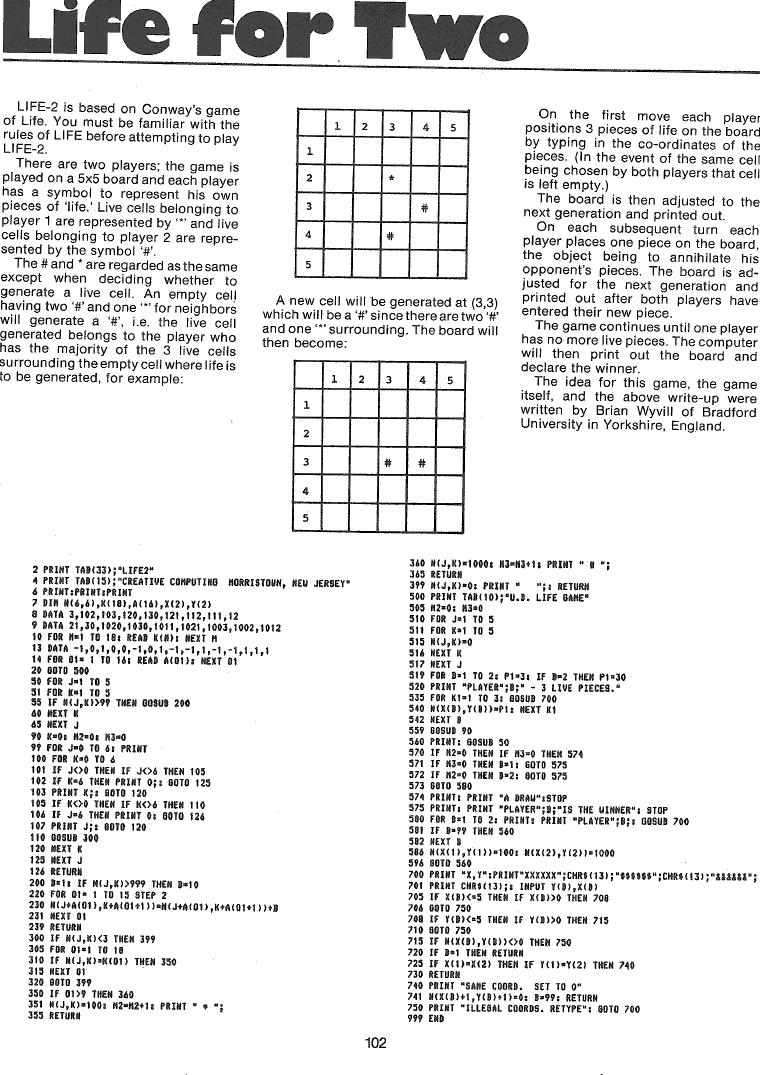Hmm, but how are you going to interpret, say, B3k(12)/S4k(345)? Seems like you'll have to publish a numbered list of orientations for 3k and 4k as you did for 2a.muzik wrote:One possible notation using this system would be B2a(0246)/S2a(1357), which would only allow for birth on the displayed B2a conditions marked as 0, 2, 4 and 6, and survival on those marked 1, 3, 5 and 7. Like with non-totalistic rules, a - to negate unwanted orientations could also be used.
This notation probably isn't optimal when it comes to the lengths of rulestrings, but at least it could be interpreted a bit easier, and understanding what a rulestring symbolises at a glance is what i'm really after.
3k has only four orientations where 4k has eight, and some isotropic bits (e.g., 6n) have only two orientations. Vaguely confusing, but maybe tolerable. Or maybe it would be worth numbering the orientations 0-7 in the same way every time, and then only using the ones that aren't duplicates.
The full list of numbered isotropic bit orientations will have 256 categories in it, instead of the 512 neighborhoods in my suggestion -- the same name can be used for B and S rule bits. Maybe that would be a more sensible arrangement than a simple binary count in MAP-rule order, which is definitely really counterintuitive... mostly due to the center cell being the 2^4 bit, so that B and S rule bits are mixed together annoyingly in the binary MAP string, in length-16 chunks.
It does seem reasonable to name all of the non-totalistic neighborhoods according to their matching isotropic bit. An arbitrary number in parentheses may be a little confusing, but I can't think of any better way to refer to those up-to-eight different orientations.
So maybe the first step is to finish a 256-neighborhood diagram, with labels on every one of the neighborhoods in order -- B0(0), B1a(0), B1a(1), B1a(2), B1a(3), B2a(0), B2a(1)... etc., etc. Maybe just use Alan Hensel's diagram, and always call the displayed neighborhood (0), where (1), (2), and (3) are the same neighborhood rotated 90, 180, and 270 degrees (when that makes sense), then (4) is mirrored across the Y axis and (5), (6), and (7) are rotated copies of (4).
Something like that, anyway? It would then be trivial-but-tedious to write a script that gives you Henselish-muzikal-NT notation for any given MAP rule.

